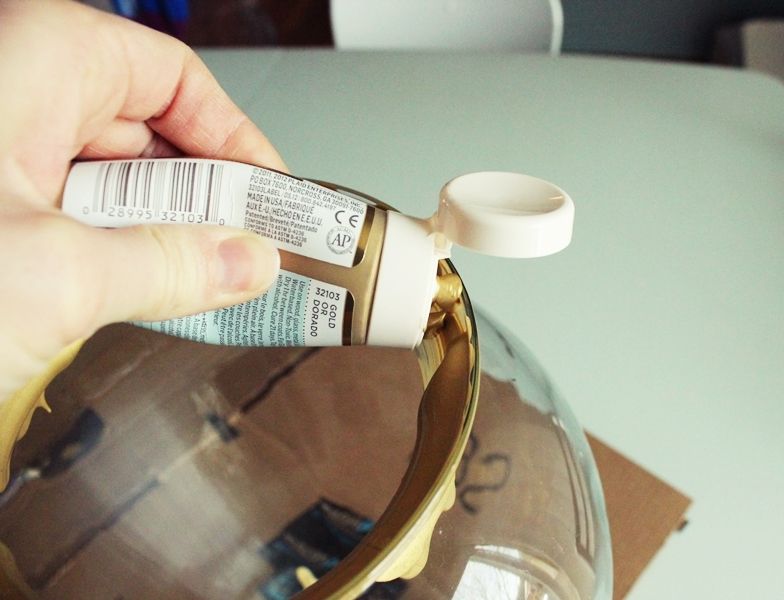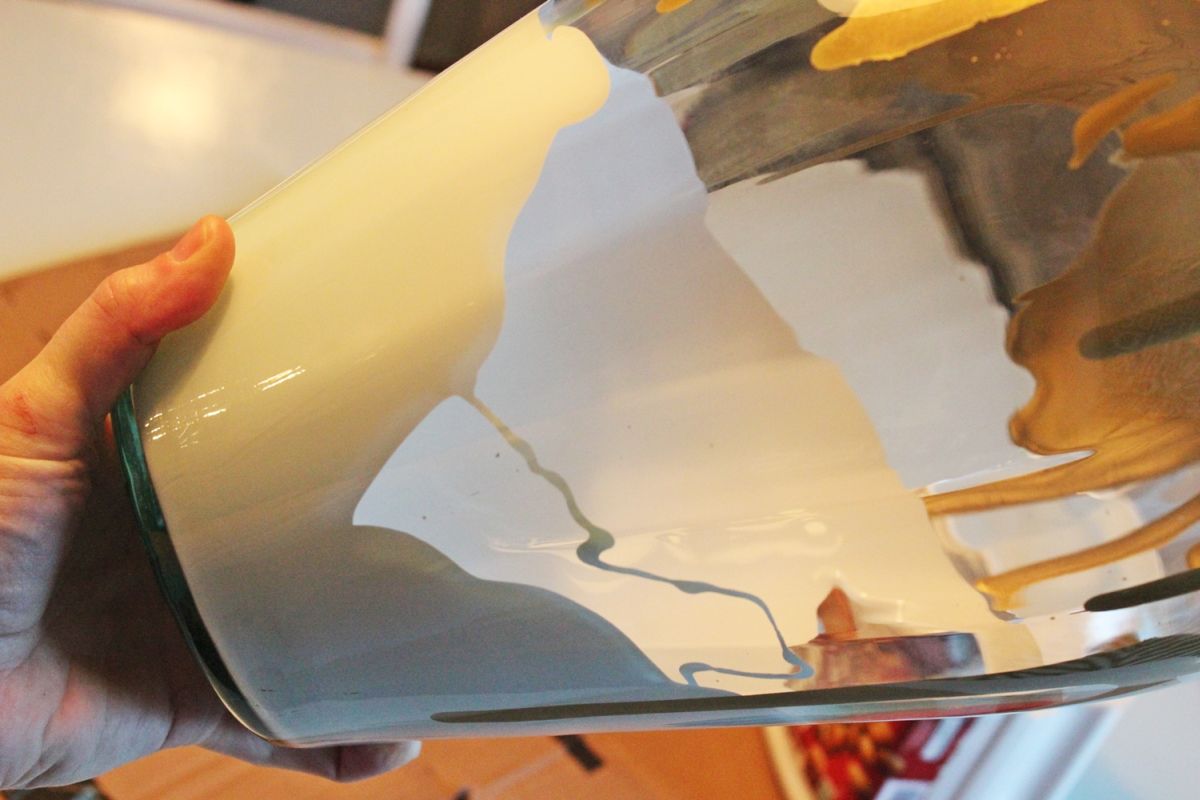Milk glass is a gorgeous, creamy kind of colored glass. It’s often found in antiques and vintage pieces, but it can be a challenge to find a glass piece you love that’s also milk glass. The solution? Do it yourself. Faux painting opens new doors to creative minds. There’s a very simple way to recreate the look and feel of milk glass on any glass piece using faux painting techniques. And even better, you can customize the look with a bit of paint drip as well.
Create Your Own DIY Paint Drip & Milk Glass Vase With These Simple Step-By-Step Instructions
So grab a plain ol’ glass piece that’s been gathering dust and disdain, and give it a fresh, creamy look by following this simple tutorial. This drip painting project will create a wonderful decoration that you can display in any part of your home, whether that’s the living room, kitchen, or bedroom.
DIY Level: Beginner
Materials Needed:
- Clear glass vase (any size)
- Gold acrylic/craft paint (used: Martha Stewart metallic gold acrylic paint; almost entire 2 oz. bottle used for this larger-sized vase)
- White latex paint
- Toothpicks/foam brush (optional)
Step 1: Apply drip paint to the inside rim of the glass vase.
To achieve the look of milk glass, all paint should be applied to the inside of the glass. This means you have to work backward, in a way, starting with whatever color you want as your dripped paint. In this case, the drip paint is metallic gold (Martha Stewart). You can go for a bold or metallic color for a more striking look, or add a pastel shade for a more subtle paint drip effect.
Squeeze a generous amount of paint all around the inside of the vase rim. The weight of the excess paint is what will form the drips.
Tip: If the rim of your vase has multiple angles, as this one does, you’ll need to apply paint to the “top” of all sections. Here, paint was squeezed directly onto the true rim and then more squeezed onto the interior “rim.”
Step 2: Spread excess paint to cover the entire glass surface.
On this initial paint layer, the important part is what is seen from the outside of the vase (through the glass), not necessarily what is seen looking in. I used a foam brush (and, later, a toothpick, which I ended up preferring due to better paint-spread control) to spread the areas of excess paint toward the areas without paint.
Step 3: Watch the paint drip.
No, I’m not asking you to watch the paint dry. But I do want you to take a few minutes and watch the paint drip to make sure the paint spread (around the vase) is fairly even and that you’ve applied an appropriate amount of paint. I noticed early on that my upper rim paint application was too heavy because instead of running down the vase wall, the paint would drip directly off the ledge down to the bottom of the vase.
Not to worry; these paint drips will be easily scraped off before my next paint application when all is dry. If this happens to you, just leave them alone and let them dry at this point.
Step 4: Wipe the rim.
If your paint is dripping to your satisfaction, wipe off the rim of your glass vase. Tip: Don’t worry too much about what the inside of the vase looks like; this photo shows a kind of streaky-looking paint, but from the outside, the gold paint should be smooth and opaque. The inside will be covered with your other paint coat.
Step 5: Let dry.
After touching up the paint so it’s opaque from the outside everywhere (this was done after the photo was taken), this next step is pretty self-explanatory. Set your vase in a safe spot, and let it dry thoroughly. This might take a few days, depending on the thickness of your paint. Don’t rush this step as you risk messing up your work so far, and it will be more challenging to remove the unwanted paint drips.
Step 6: Remove unwanted paint drips.
Remember those paint drips that fell to the bottom of our vase, that we left alone? Well, they’ve dried now and are ready to be removed. Tip: Thick globs of paint are easier to scrape off glass than thin streaks, which is why I recommended you leave the globs, if any, completely alone.
Simply scrape off the unwanted drips. I used my fingernail, and the paint was thick enough that it just peeled off quite easily.
Step 7: Add the main color of paint.
Pour enough paint into the bottom of the vase to cover the bottom, about 1/4″ or so (depending on the size of your vase and the bottom). The amount you pour is dependent upon the size of your vase – you want just enough to cover the clear glass, and not more
Swirl the paint around the vase, covering all sides and clear spaces.
Turn the vase on its side, and slowly work the paint from the bottom of your vase up toward the top. Wipe away significant excess; remember, the paint need only be as thick as to appear opaque through the glass.
Step 8: Let it dry.
When the entire inner vase is covered in paint, let it dry. I left mine upside down and checked it every 10 minutes or so for about an hour, to wipe away excess drips.
Step 9: Enjoy your beautiful “new” vase.
It’s creamy and unique and custom-colored to your taste and space.
I love shiny metallic touches in a space; this method provides that while still being tempered with a soft-looking milk glass.
As you can see, this stylish paint drip vase looks fantastic in any room in your home. There’s always a risk with drip painting that it may look messy or unprofessional, but this vase looks like something you would spend a fortune on in a home decoration store. When completing this project, ensure you don’t rush any of the stages, especially the drying stage. While you are probably keen to have your work completed, you’ll enjoy a much more professional look when you take your time with the paint drip art. It’s an easy way to bring new life into any space of your home, and you can choose any color or size of vase to fit your needs.
We hope you enjoy this simple and beautiful DIY project!
The post DIY Paint Drip & Milk Glass Vase appeared first on Home Decorating Trends - Homedit.




















0 Commentaires